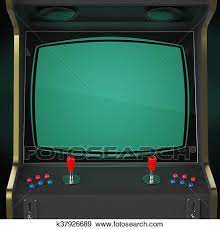Intro
this timeline is a reboot of my first ever timeline called What if Nintendo Stayed in the Arcades (V1) and a return to form for my projects. which i kept making and trying to get bigger and bigger until i went into a project so large that i quit and reflected on what project i should do; and after reading my oldest TL a little bit. I wanted to remake this TL with all the advancement i made though in the past 6 months on this website.
So here we go, Nintendo is and has been a household name in the gaming industry and now in entertainment industry as an whole but they started out as an card maker in 1889 making hanafuda cards to get past Japanese gambling laws and were a toy maker for the vast majority of its life and in the late 1970's they dipped their toes as arcade developers but abandoned in-house arcade development all together after the NES/Famicom was such an successful machine that they started to focusing exclusively on home consoles (and later handhelds). But what if, Nintendo stayed in the arcades and developed advanced arcade hardware to compete with Sega and all other Arcade game developers and stayed in the arcades until the modern day where the arcades are still popular in western markets. What changes to the gaming industry would happen from an more arcade-centric Nintendo and a more arcade-centric gaming industry, what acquisitions would happen, and what new franchises would Nintendo and have due to the arcades.
there will also be a lot of other companies that go much differently ITTL like Atari, Sega, Sony, RCA, and Apple but the main focus is on Nintendo and what they do.
But now, we have to go way back to the 50's to see where it all began.
main links i use : https://encrypted-tbn0.gstatic.com/...ft1inHRKF1cFTtQDA_97BHQIj6EwLivtO93c&usqp=CAU, https://www.copetti.org, fantendo.fandom.com/wiki/Fantendo:Main_Menu, https://videogames-fanon.fandom.com/wiki/Video_Games_Fanon_Wiki, and https://www.wikipedia.org.
Edit: added some text about Nintendo's beginning with hanafuda cards.
Another edit: added new sentences about other companies that changed ITTL.
Third edit: updated the name to the new name.
So here we go, Nintendo is and has been a household name in the gaming industry and now in entertainment industry as an whole but they started out as an card maker in 1889 making hanafuda cards to get past Japanese gambling laws and were a toy maker for the vast majority of its life and in the late 1970's they dipped their toes as arcade developers but abandoned in-house arcade development all together after the NES/Famicom was such an successful machine that they started to focusing exclusively on home consoles (and later handhelds). But what if, Nintendo stayed in the arcades and developed advanced arcade hardware to compete with Sega and all other Arcade game developers and stayed in the arcades until the modern day where the arcades are still popular in western markets. What changes to the gaming industry would happen from an more arcade-centric Nintendo and a more arcade-centric gaming industry, what acquisitions would happen, and what new franchises would Nintendo and have due to the arcades.
there will also be a lot of other companies that go much differently ITTL like Atari, Sega, Sony, RCA, and Apple but the main focus is on Nintendo and what they do.
But now, we have to go way back to the 50's to see where it all began.
Welcome to "What if Nintendo Stays in the arcades (Reboot)"

main links i use : https://encrypted-tbn0.gstatic.com/...ft1inHRKF1cFTtQDA_97BHQIj6EwLivtO93c&usqp=CAU, https://www.copetti.org, fantendo.fandom.com/wiki/Fantendo:Main_Menu, https://videogames-fanon.fandom.com/wiki/Video_Games_Fanon_Wiki, and https://www.wikipedia.org.
Edit: added some text about Nintendo's beginning with hanafuda cards.
Another edit: added new sentences about other companies that changed ITTL.
Third edit: updated the name to the new name.
Last edited: